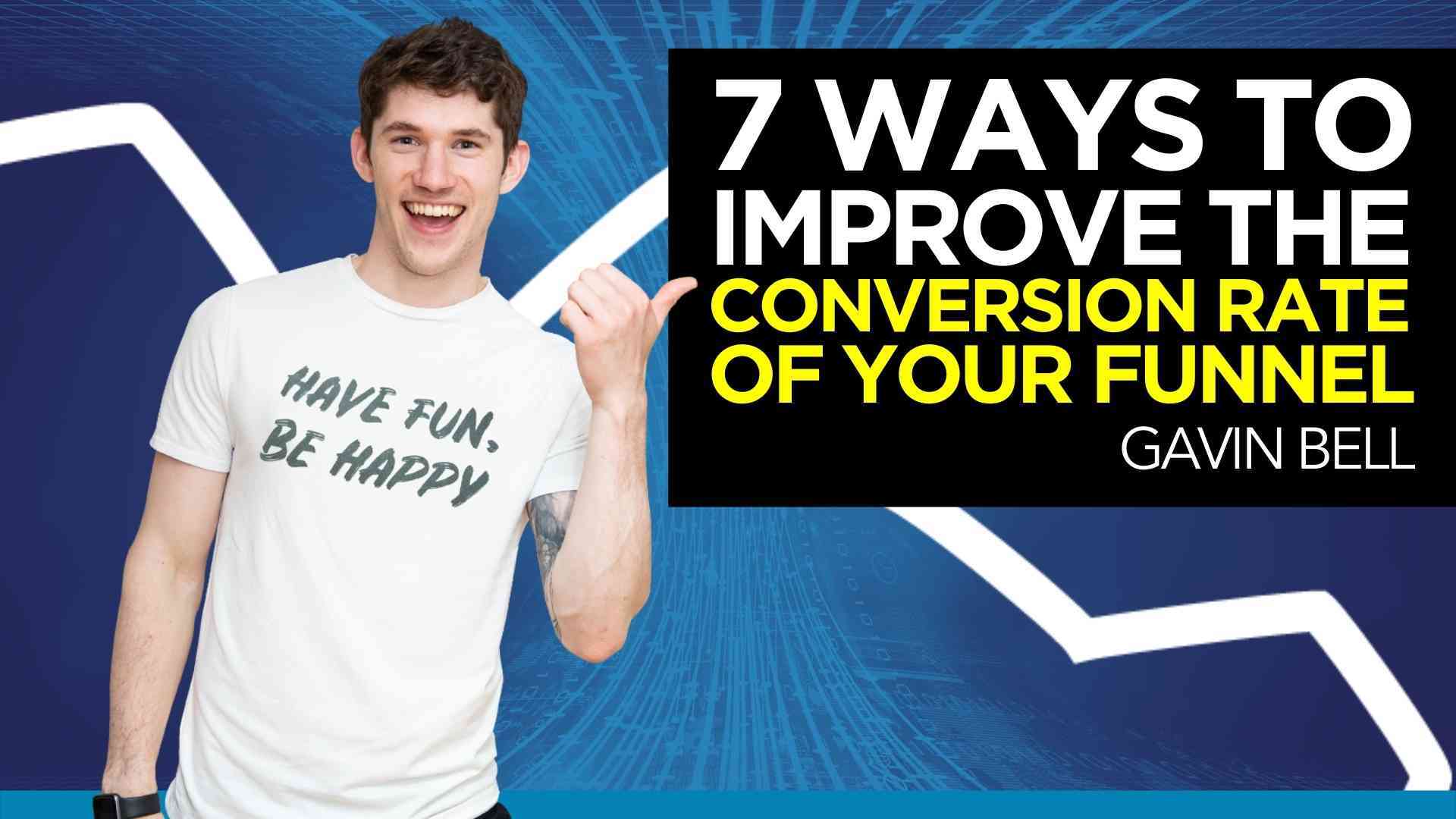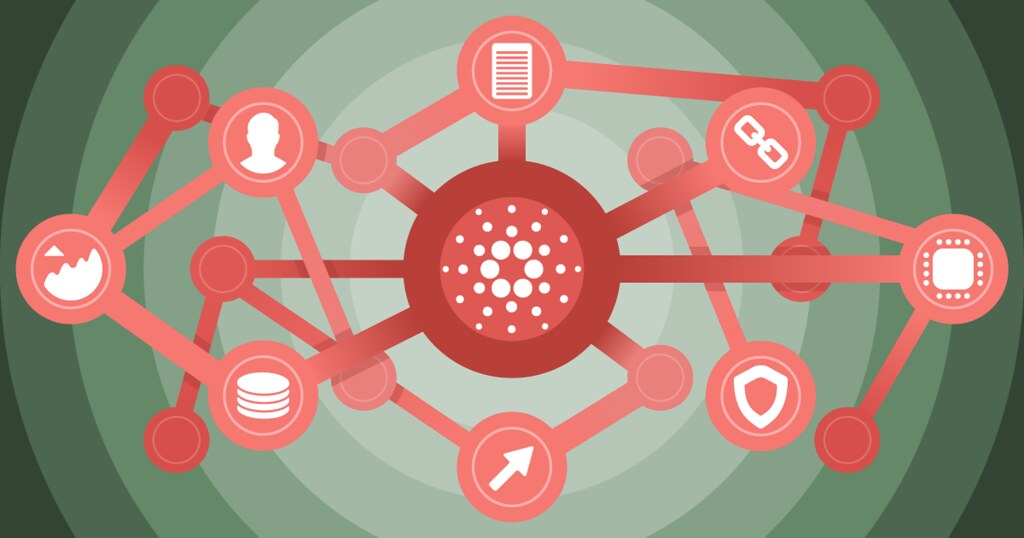7 Ways To Improve The Conversion Rate Of Your Funnel
You can have the most incredible ad campaign set-up, but if the funnel you’re sending traffic to doesn’t convert, it doesn’t matter how great your campaign is - you simply won’t see the results you desire. The post 7...


As advertisers, we focus a lot of our energy on ensuring our ad campaigns are performing and converting as best as they possibly can.
But that’s only one part of the equation.
What happens after the click is just as important (if not more important!)
You can have the most incredible ad campaign set-up, but if the funnel you’re sending traffic to doesn’t convert, it doesn’t matter how great your campaign is – you simply won’t see the results you desire.
And so, in this article, I’m going to share 7 ways you can improve the conversion rate of your funnel, leading to better overall performance and results.
1. Include the 3 argument types on each page
Whenever someone makes a buying decision, they use two different parts of their brain.
There’s the emotional part (the limbic brain) and the logical part (the frontal lobe). It’s important to understand this because it plays a big role in how we structure the pages in our funnel.
When humans make a purchasing decision, it’s mainly an emotional reaction. A study by a Harvard School of Business Professor, Gerald Zaltman, concluded that 95% of purchase decisions are made by the limbic system (the emotional part).
We see something, like it and decide we want it. Once we’ve decided we want something, the frontal lobe then helps sway us on whether we actually buy the thing by processing it logically.
Think about someone buying their dream house.
They go to view the house and fall in love with it instantly and decide they want to buy it – that’s the limbic brain. It’s only when they get home and start looking at things like the area, electricity bills, neighbourhood and all the other bits that they start thinking about the purchase logically.
And so, when it comes to our marketing (and our funnel specifically), we need to understand this as it impacts how we should structure the pages.
Regardless of the type of page you’re sending people to (whether it’s a lead gen funnel or e-commerce) you need to be making three types of arguments:
Emotional arguments
Logical arguments
Urgency
And we want to make them in this order too – since that’s the order in which someone makes a purchasing decision.
Have your emotional arguments at the top of the page, above the fold. What are the emotional reasons someone would purchase your product? It can often be as simple as saving time, stress or money.
As you move down the page, you can start talking about the logical arguments. These are often features and benefits. What would someone need to know/understand in order to purchase the product or service?
And lastly, for good measure – always include urgency in your messaging to further push those people to take action. There are people out there that simply won’t take action unless you give them a reason to take it now. Some good ways to do this are: Give them a certain timeframe, warn them about limited stock or simply talk about why it’s so important they take action now.
By doing this you’re structuring the pages in a way that flows with how we make purchasing decisions as human beings – setting you up for the best chance of success.
2. Benefits > Features
There’s a common saying in the copywriting world: “features tell, benefits sell.”
However, when most come to write copy for their product/service, they write about all the features without explaining the benefits.
Features focus on the product/service itself. Such as what you receive, what it does or how it works.
Some examples of features are:
Storage up to 1TBAccess to a free Facebook groupLatest waterproof technologyThose things are great, but they don’t tell the end consumer the benefit to them, which makes it less compelling.
Benefits focus on the outcome of the product/service, telling the customer exactly what the feature will mean for them. Bringing it back to the first point – this is how we start to build emotion into our copy.
By telling people what a feature means to them, they start to visualise themselves using it – which creates the emotional reaction we need.
Luckily for you, I’ve got a super simple way to turn your features into benefits.
The “so that” statement
This is a tactic I use every single time I write copy.
If you’re like most people and tend to write about the features, simply add the words “so that” to the end of your sentence. This forces you to explain the benefit that’s tied to the feature, making your copy much more hard-hitting.
The formula you can use is:
If ___ so that you can ___.
Let’s take our examples from above.
Storage up to 1TB so that you can save all your files without ever worrying about running out of space.Get access to our free Facebook group so that you can network with like-minded individuals. The latest waterproof technology so that you can hike out in the rain for longer without getting wet feet.Review all your copy and ensure every feature is combined with the real benefit. This will make your copy much more emotionally driven and compelling to anyone that’s reading it.
3. Split test all pages
The key to success in any advertising campaign is comprehensive testing. Testing images, copy, creative types and audiences. But the importance of testing doesn’t stop at the advertising campaign – it’s just as important to continuously test the pages in your sales funnel.
You should test at least 2 variants of every page in your sales funnel. Tests can be big or small, from having completely different designs to changing the colours of a button. It doesn’t matter what you test so much. The most important thing is just that you are testing… because that allows you to learn what works and what doesn’t.
And like all great marketers do: do more of what works and do less of what doesn’t.
Things you can test at each stage of the sales funnel
Headline/subtitle – this is arguably the most important thing to test because it’s the first thing people see and read when they land on a page. Little changes in a headline can have a huge impact on conversion rates. The headline is where you want your biggest emotional argument on the page.Main image/video – most funnel pages will have imagery or videos on them. This is another key thing to test out. Try different styles of images and videos to see which ones perform better, such as professionally designed images vs iPhone shot photos.Sales copy – try testing different features and benefits. Even testing the order in which you share the features can make a difference. If you’re listing benefits in bullet point format, the first and last bullets are the most important.Call to action – the copy you use on the button can make a huge impact on performance. Try ditching the boring “Learn more” and try something more unique such as “Get Started – See How 97% Lose Weight In Just 30 Days”Upsells/Cross-sells – test different offers throughout your funnel to see which products/offerings people find more compelling.

Get the Digital Marketing Blueprint…
With a Customer Value Journey that strategically builds a relationship with new prospects and converts them into loyal, repeat customers. Click here
4. Improve average order value with offers
The success of a campaign isn’t always just based on the conversion rate of the campaigns and funnels. Sometimes it can come down to how much money people are spending on your funnel.
You can have a funnel that converts, but if the money being made isn’t providing good levels of profit on top of ad spend, you have a problem.
We recently worked with an e-commerce store that sold home gifts. We managed to optimise the campaigns so successfully that we were able to get our cost per sale down to less than £5. However, because the average order value of the site was only £15, the ROAS wasn’t sustainable.
In order for us to make the campaigns successful overall, we had to improve the conversion rate of the site – specifically focussing on increasing the Average Order Value (how much someone spends per transaction, on averageGavin Bel).
To do this, we added in what is called order bumps and one-time offers.
An order bump is an offer made at the checkout, right before someone hits the pay button. A common order bump might be to “supersize” the order for a reduced rate or to get another product at a low price. These convert extremely well.
A one-time offer is what it says on the tin.
Once someone has made a purchase, another offer appears on the screen inviting them to purchase a related product at a discounted price.
Adding both of these increased the AOV of our client’s site by 20%, vastly improving the campaign’s overall effectiveness. Even if AOV isn’t a problem for you, look at adding these two tactics to improve it.
By not doing it, you’re essentially leaving money on the table!
5. Improve the quality of traffic on the page
If your funnel isn’t converting, it might simply be because you’re attracting the wrong people in the first place.
You can have the best funnel and offer in the world, but if the people visiting it aren’t relevant, it’ll never convert. This is why it’s so important to ensure you’re performing lots of campaign tests – testing which audiences work and which ones don’t.
With all of the advertising platforms, it’s very easy to see which audiences are bringing in the best returns. And like I mentioned earlier, simply do more of what’s working and turn off what’s not.
There is one fool-proof way of ensuring you’re only getting the highest quality people to your sales funnel: content creation.
Creating content is one of the most effective ways to attract an audience of people who definitely have an interest in what you offer and it’s something we advise every single client to do – either in written or video format.
The biggest objection we face is “but I don’t know what to write about?!”
And so if that’s you, I’ve got you covered.
The simplest way to start creating effective content is to simply answer the questions, objections and queries your customers have.
Here’s how to approach it:
Create a list of all the questions you’re asked as a business (get your team involved in this)Turn those questions into eye-catching headlinesSit down in front of a camera and record the answers (or write them up)This is so effective for two reasons:
Only people who are genuinely interested in what you do will consume the contentWhen you promote the content through advertising, it’s super cheap because you’re not selling anything, you’re providing value.Pretty quickly, you start to build a large audience of people who have an interest in your offering.
Let’s say you’re a physiotherapist. You could film a 60s video titled “5 reasons you have back pain”. You could then set up a basic ad campaign targeting people in your local area (that fit your basic customer avatar).
Who’s going to watch that video?
People in the local area who have back pain!
Which, for a physiotherapist, is the perfect audience. What’s better is, these people are qualified AND educated. They know who the physiotherapist is already (building trust) and making them much more likely to take action and convert.
And to supercharge this strategy, you could run retargeting ads to the people who watched the video, pushing them to your sales funnel.
6. Increase or decrease form friction
When it comes to lead generation funnels, there’s a fine line between lead quantity and lead quality.
It’s not hard to generate lots of leads at a low cost, but it is difficult to generate lots of QUALIFIED leads at a low cost.
It’s a constant balancing act, ensuring that you have both quality and quantity.
The best way to strike the balance is to simply increase or decrease the fields you have in the form.
This increases or decreases the friction that someone has to go through in order to convert. The more questions/fields, the higher the friction. The fewer fields, the lower the friction.
If you’re struggling with lead quality, try and add some more fields to the form, specifically around the main reason your quality is low. For example, if you find the people you speak to aren’t motivated, add a “how motivated are you?” question.
If you’re not getting enough leads, try reducing the number of questions in the form and monitor what impact that has.
Whenever we’re starting a new campaign, we will always start with fewer fields to make sure we generate as many leads as possible. And then if we feel like we need to improve the quality of the leads, we’ll start slowly adding more fields to the form.
7. Include social proof throughout
If there’s one thing that stops people from converting in a funnel, it’s a lack of trust.
A lack of trust in the people behind the funnel, the offer itself or the promise the funnel is making.
So, how do you build trust with people? How do you show them that your offer is legitimate and will have an impact on their lives?
Show the results that other people have achieved.
Everyone in the world has problems. And they have desired results.
Your job as a marketer is to show people how your product/service is a bridge from their problems to their desired results.
And the most effective way to do that is by showing the stories of others who have successfully achieved that with your product/service.
Social proof can take the form of: case studies, testimonials and even quotes from previous customers and people who have already converted through the funnel. The more you can share, the better.
Even better – if you can have your social proof cover the main objections you know people have when converting, your social proof will do some of the selling for you!
Wrapping up…
Improving the funnel conversion rate can have a drastic effect on the performance of your overall campaigns and business. If you’re able to get your funnel and ad campaigns to a point where they are profitable, you can scale your spend quickly.
Start implementing some of these strategies and I guarantee that you’ll see improvements in your overall results.
Let me know – have you tried any of these? Which was the most effective for you?

 Astrong
Astrong 
































